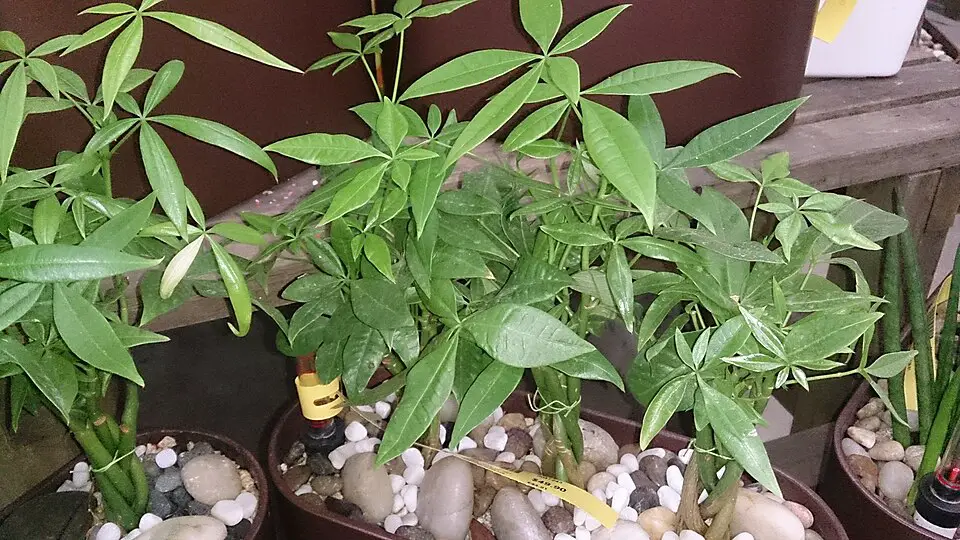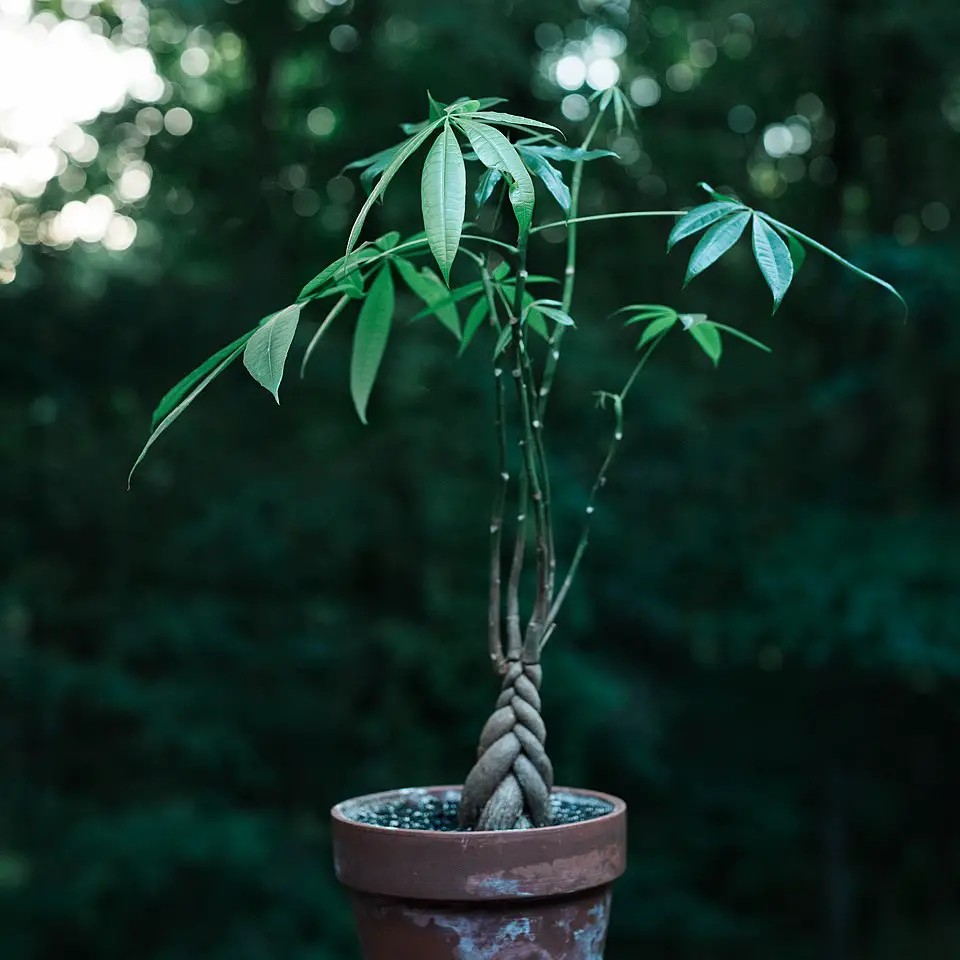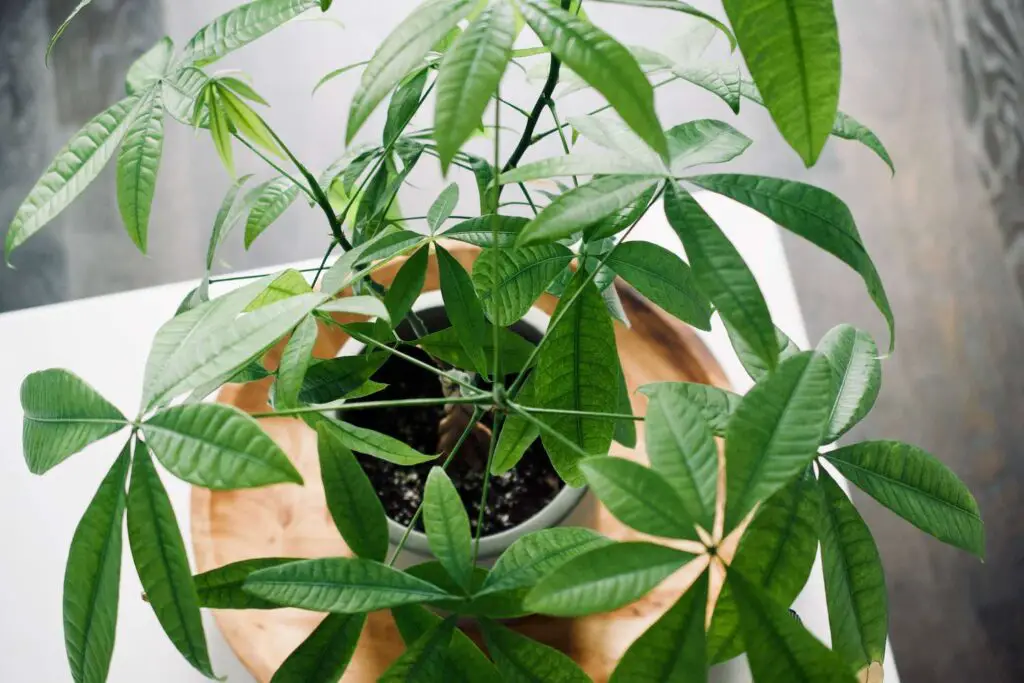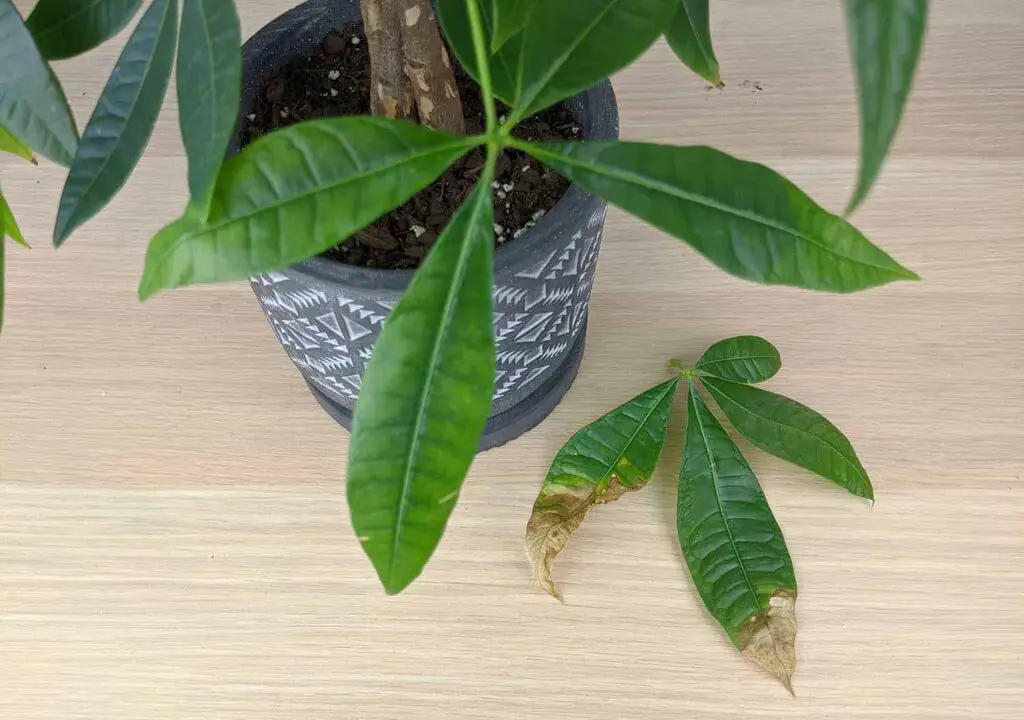The growth stages of a Money Tree (Pachira aquatica) typically include the seedling stage, juvenile stage, mature stage, and the adult stage. Each phase presents unique characteristics and care requirements, allowing the plant to thrive and reach its full potential over time.
Understanding the Money Tree
The Money Tree is a popular houseplant known for its beautiful braided trunk and lush green leaves. It originates from Central and South America, particularly in regions with wet soils. This plant symbolizes good luck and prosperity in various cultures, which contributes to its widespread popularity.

Growing a Money Tree can be a fulfilling experience. However, understanding its growth stages is crucial for providing the right care at each phase. The plant goes through distinct stages, each requiring different environmental conditions and care practices. By being aware of these stages, you can ensure your Money Tree thrives throughout its life.
Growth Stages of the Money Tree
The growth of a Money Tree can be divided into four main stages: seedling, juvenile, mature, and adult. In each stage, the plant undergoes significant changes in size, appearance, and care needs. Below is a detailed overview of each stage.
Seedling Stage
This initial stage begins when the seed germinates. The seedling is delicate and requires special attention. During this phase, the plant will typically grow a few small leaves and establish its root system.

- Light Requirements: Bright, indirect sunlight is essential for optimal growth.
- Watering: Keep the soil moist but not soggy; overwatering can lead to root rot.
- Temperature: Ideal temperatures range from 65°F to 75°F (18°C to 24°C).
Juvenile Stage
As the plant matures into the juvenile stage, it begins to grow more rapidly. The leaves become larger and more defined, usually taking on a palmate shape. This stage can last several months or even years, depending on the growing conditions.
- Light Requirements: Continue providing bright, indirect sunlight.
- Watering: Water when the top inch of soil feels dry to the touch.
- Nutrients: Fertilize with a balanced fertilizer every month during the growing season.
Mature Stage
The mature stage is characterized by significant growth in both height and leaf size. At this point, the plant may start to develop a thicker trunk and more branches. It becomes more resilient and can tolerate varying light conditions.
- Light Requirements: While bright light is still preferred, the plant can adapt to lower light conditions.
- Watering: Reduce watering frequency; allow the soil to dry out between waterings.
- Pruning: Prune as necessary to maintain shape and encourage bushier growth.
Adult Stage
The adult stage marks the full maturity of the Money Tree. The plant can reach heights of up to six feet or more when properly cared for. It has a robust trunk and a full canopy of rich green leaves.

- Light Requirements: Bright, indirect light remains ideal for optimal health.
- Watering: Water less frequently; monitor for signs of overwatering.
- Pests and Diseases: Regularly check for common pests like spider mites and aphids.
Caring for your Money Tree during each stage is essential for its health and longevity. Understanding its needs at every phase will help you provide an environment where it can flourish.
| Growth Stage | Characteristics | Care Tips |
|---|---|---|
| Seedling | Small leaves, delicate roots | Bright light, moist soil |
| Juvenile | Larger leaves, rapid growth | Regular watering and monthly fertilization |
| Mature | Thicker trunk, full foliage | Less frequent watering, pruning |
| Adult | Fully mature, robust appearance | Monitor for pests, adjust light as needed |
By understanding these stages and their unique requirements, you can foster
Factors Influencing Money Tree Growth
The growth of a Money Tree is influenced by several environmental and care factors. Understanding these elements can significantly improve the plant’s health and growth rate. Here are some key factors to consider:
Light Conditions
Light plays a crucial role in the growth of a Money Tree. The amount and quality of light can affect everything from leaf color to overall height.
- Bright Indirect Light: This is the ideal lighting condition for a Money Tree. Direct sunlight can scorch the leaves, while insufficient light can hinder growth.
- Adaptability: While it thrives in bright light, the Money Tree can adapt to lower light conditions. However, growth may slow down.
- Seasonal Changes: During winter months, natural light may decrease. Consider rotating the plant to ensure even light exposure.
Watering Practices
Proper watering is essential to prevent overwatering or underwatering, both of which can lead to health issues.

- Soil Moisture: Always check the top inch of soil for dryness before watering. The soil should be kept moist but not soggy.
- Drainage: Ensure that your pot has drainage holes. This will prevent water from accumulating at the bottom, which can cause root rot.
- Seasonal Adjustments: Watering frequency may need to be adjusted according to the season. In warmer months, the plant may require more water than in cooler months.
Temperature and Humidity
The Money Tree prefers specific temperature and humidity levels to thrive. Keeping these conditions in check can enhance growth.
- Optimal Temperature: The ideal temperature range is between 65°F and 75°F (18°C to 24°C). Avoid exposing the plant to extreme temperatures.
- Humidity Levels: Higher humidity levels benefit the Money Tree. Consider misting the leaves or placing a humidifier nearby, especially in dry months.
- Avoid Drafts: Keep the plant away from drafts or sudden temperature changes, which can stress the plant and hinder growth.
Pest Management and Disease Prevention
Keeping your Money Tree healthy also involves managing pests and preventing diseases. Regularly inspecting your plant can help catch issues early.
Common Pests
Pests can cause significant damage if not addressed promptly. Here are some common pests that may affect your Money Tree:
- Spider Mites: These tiny pests thrive in dry conditions and can cause yellowing leaves.
- Aphids: These small insects suck sap from the plant, leading to stunted growth.
- Mealybugs: Characterized by their white, cotton-like appearance, they can weaken the plant by feeding on its sap.
Disease Prevention
Diseases often arise from poor care practices. Here are some preventive measures:
- Avoid Overwatering: Ensure proper drainage and monitor soil moisture levels to prevent root rot.
- Clean Leaves: Regularly wipe down leaves with a damp cloth to remove dust and prevent fungal infections.
- Use Quality Soil: Fertile, well-draining soil supports healthy root development and reduces disease risk.
Fertilization Practices
Fertilizing your Money Tree at the right times can promote healthy growth and vibrant foliage. Here are some guidelines for effective fertilization:
Choosing Fertilizer
Selecting the right type of fertilizer is essential for optimal growth. Consider the following:
- Balanced Fertilizer: Use a balanced, water-soluble fertilizer with equal parts nitrogen, phosphorus, and potassium (N-P-K) during the growing season.
- Organic Options: Organic fertilizers can provide slow-release nutrients without chemicals that could harm your plant.
- Avoid Over-Fertilizing: Too much fertilizer can damage roots. Follow package instructions carefully.
Frequency of Application
The frequency of fertilization varies depending on the growth stage of your Money Tree:
- <
- Mature and Adult Plants: Fertilize adult plants every six to eight weeks during the growing season and reduce frequency during winter.
li>Dilute Fertilizer: For seedlings and juvenile plants, use diluted fertilizer every four to six weeks during spring and summer.
By monitoring these factors and making necessary adjustments, you will help your Money Tree grow steadily through its various stages of development, ensuring a vibrant and healthy plant for years to come.
Repotting Your Money Tree
Repotting is an essential aspect of caring for a Money Tree, especially as it grows. As the plant matures, it may outgrow its current pot, which can impede its growth and health. Understanding when and how to repot your Money Tree can ensure it continues to thrive.
When to Repot
Knowing the right time to repot your Money Tree is crucial. Here are some signs that indicate it’s time for a new pot:
- Root Bound: If roots are visibly growing out of the drainage holes or circling around the root ball, it’s time to repot.
- Stunted Growth: If your plant has stopped growing or shows signs of decline despite proper care, it may need more space.
- Soil Degradation: Over time, soil can lose its nutrients and structure. If the soil appears compacted or depleted, consider repotting.
Choosing the Right Pot
Selecting a suitable pot is important for your Money Tree’s health. Here are some factors to consider:
- Size: Choose a pot that is 1-2 inches larger in diameter than the current one. A pot that is too large can hold excess moisture, leading to root rot.
- Material: Clay pots are porous and allow air circulation, while plastic pots retain moisture. Choose based on your watering habits.
- Drainage: Ensure the new pot has adequate drainage holes to prevent water accumulation.
Repotting Process
Following the correct steps for repotting can help minimize stress on your Money Tree:
- Water the Plant: A few days before repotting, water your Money Tree to ensure the soil is moist but not soggy. This makes it easier to remove the plant from its pot.
- Prepare the New Pot: Add fresh potting mix to the bottom of the new pot. A well-draining potting mix designed for houseplants is ideal.
- Remove the Plant: Gently remove the Money Tree from its current pot. If the roots are tightly bound, loosen them carefully with your fingers.
- Place in New Pot: Position the plant in the center of the new pot and fill around it with soil. Press lightly to eliminate air pockets.
- Water Thoroughly: After repotting, water the plant thoroughly to help settle the soil around the roots.
Propagation Techniques for Money Trees
If you’re looking to expand your collection or share this beautiful plant with others, propagating your Money Tree can be a rewarding experience. There are several methods to propagate this plant successfully.
Leaf Cuttings
One common method of propagation is through leaf cuttings. Follow these steps for success:
- Select Healthy Leaves: Choose a healthy leaf from an existing Money Tree. Look for leaves that are vibrant and free from pests or disease.
- Cut the Leaf: Using clean scissors or a sharp knife, cut a leaf with a small piece of stem attached.
- Let It Callous: Allow the cutting to dry and callous for a few hours before planting. This reduces the risk of rot when placed in soil.
- Plant in Soil: Place the cutting in a small pot with well-draining soil and water lightly.
- Provide Humidity: Cover with a plastic bag or place in a mini greenhouse to maintain humidity until roots develop.
Stem Cuttings
Stem cuttings are another effective way to propagate a Money Tree. Here’s how to do it:
- Select a Healthy Stem: Choose a healthy stem that has several leaves attached.
- Cut and Prepare: Cut the stem below a leaf node. Remove any lower leaves to expose nodes for rooting.
- Rooting Hormone: Optionally, dip the end of the cutting in rooting hormone to promote faster root growth.
- Planting: Plant the stem cutting in a small pot with well-draining soil.
- Water and Cover: Water lightly and cover with a plastic bag or dome to create humidity until roots develop.
Caring for Young Propagated Plants
Caring for young plants after propagation is essential for their successful growth. Here are some tips:
- Light Conditions: Provide bright, indirect light to encourage healthy growth without burning young leaves.
- Watering: Keep soil slightly moist but avoid overwatering. Check moisture levels regularly and adjust accordingly.
- Nutrient Needs: Once established, feed with diluted fertilizer every four to six weeks during the growing season.
By mastering repotting and propagation techniques, you can maintain a thriving Money Tree and enjoy sharing it with friends and family. These practices will not only help you grow more plants but also deepen your connection with this beautiful houseplant.
Common Issues and Solutions
As with
any plant, growing a Money Tree can come with its challenges. Understanding common issues that may arise can help you address them quickly and effectively. Here are some common problems along with their solutions:
Yellowing Leaves
Yellowing leaves can be a sign of several issues. Identifying the cause is essential to remedy the problem:
- Overwatering: This is the most common cause of yellowing leaves. Ensure that the soil is allowed to dry out between waterings and check for drainage.
- Nutrient Deficiency: A lack of essential nutrients can cause leaves to yellow. Regularly fertilizing during the growing season can help prevent this issue.
- Low Light Conditions: If the plant is not receiving enough light, it may also exhibit yellowing leaves. Consider moving it to a brighter location.
Leaf Dropping
If your Money Tree is dropping leaves, it could indicate stress:
- Sudden Temperature Changes: Money Trees are sensitive to abrupt changes in temperature. Keep them away from drafts and heaters.
- Underwatering: If the plant is not getting enough water, it may drop leaves as a survival mechanism. Check the soil moisture regularly.
- Pests: Inspect for pests that may be affecting the plant. Treat any infestations quickly to minimize damage.
Root Rot
Root rot is a serious issue that can arise from overwatering or poorly draining soil:
- Signs of Root Rot: Look for wilting, yellowing leaves, and a foul smell coming from the soil.
- Treatment: If root rot is suspected, remove the plant from its pot, trim away affected roots, and repot in fresh, well-draining soil.
Long-Term Care for a Thriving Money Tree
Caring
for a Money Tree over the long term involves consistent attention to its changing needs. Here are some long-term care tips to ensure your plant remains healthy:
- Regular Pruning: Pruning helps maintain the shape of your plant and encourages bushier growth. Remove any dead or damaged leaves and stems as needed.
- Seasonal Adjustments: Be aware of seasonal changes in light and temperature, adjusting your care practices accordingly.
- Monitor for Pests: Regularly inspect your plant for signs of pests or disease. Early detection can prevent more significant problems later on.
- Rotate the Plant: To promote even growth, rotate your Money Tree occasionally to ensure all sides receive adequate light.
Final Thoughts
The journey of growing a Money Tree can be both rewarding and educational. By understanding its growth stages and providing appropriate care, you can enjoy a thriving plant for years to come. Remember, each Money Tree is unique, and observing your plant’s specific responses to care will guide you in making adjustments as necessary.
Cultivating a Money Tree not only beautifies your space but also symbolizes prosperity and good fortune. Whether you are a novice or an experienced plant enthusiast, following the guidelines outlined in this article will help you nurture a healthy, vibrant Money Tree. Embrace the process of growth, and enjoy watching your plant flourish through each stage of its life.
Your investment in understanding your Money Tree will pay off with lush foliage and a beautiful addition to your home decor. Happy planting!
